|


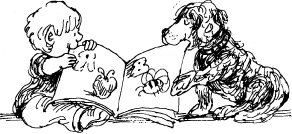
Probably the best activity you can share with your child is reading books together. The combination of warmth, comfort, security, companionship, nice pictures, and a good story is hard to beat for sheer pleasure and effective learning. Start reading to your child by the time he or she is a year old, and continue on a regular basis throughout his or her childhood. Select books that are appropriate for your child's interest level.
Early on, casually show your child how books work: how they have pages that must be turned carefully, how the pages start at the front and go to the back, and how the left page is read before the right page. Love and respect for books is a lifelong attitude that children can acquire when they are very young.
Making your own books
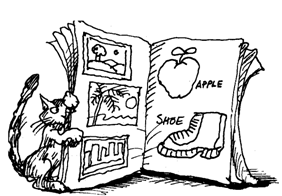
Some of your child's favorite books will undoubtedly be ones you have made together.
Scrapbook
Cut out pictures of familiar things and paste them together into a scrapbook. Postcards, greeting cards, and junk mail make fine scrapbook additions.
Photo album
An album of your child's baby photos will help your child watch him- or herself grow up. Supertots like to see pictures of themselves when they were babies.
Car notebook
Keep some pencils and a spiral notebook in the car for times when you get stuck in a traffic jam and have to wait. Let your child scribble on a few pages, and make a few notes about where you were when he or she made the scribbles and how old he or she was. After a few years you'll have an illustrated history of traffic jams you shared.
First books
A one-year-old enjoys reading the following kinds of child-proof books all by him- or herself:
Cardboard Books
Plastic foam-filled books
Cloth Books
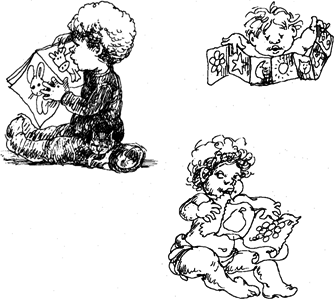
Signs
Children can learn to recognize certain words seen over and over again on familiar signs. The idea is not so much to teach them reading at an early age as to get across the notion that words are made of letters and that printed words have spoken sounds and meanings that go with them.
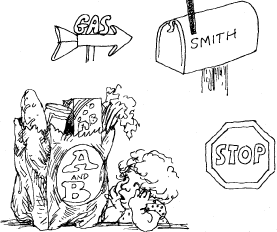
Where to get books for your child
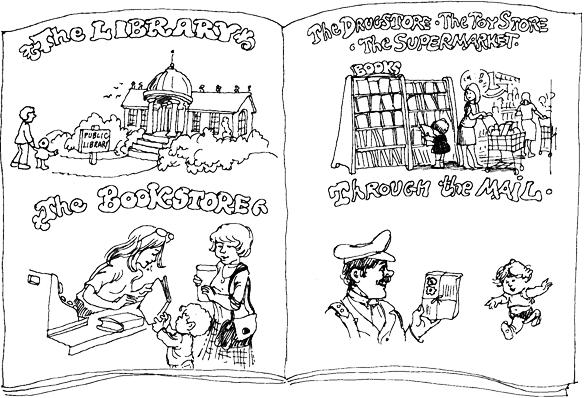
"Reading" books alone
Certain large picture books (the Richard Scarry books are a good example) are filled with little pictures of things drawn in clear detail on each page. You may tire of looking at these books, but your child will probably enjoy looking at the little pictures over and over again. After you have read the book together a number of times, suggest that your child "read" it by him- or herself. Perhaps you can set aside special "reading-alone-together-times," when each of you reads your own reading material.
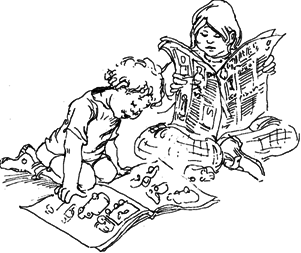
Toy and gimmick books
Toy and gimmick books are appealing to adults and older children, but for one- and two-year-olds, they are a waste of money. The reason is that to enjoy them, a child must have deft manipulative skills to make them work. The "zip-up" and "button-practicing" books are harder to zip and button than regular clothes, and pop-up books are almost impossible for small children to work. Very few twos can pull and push the tabs back and forth to make the pictures pop up. They also find it hard to restrain themselves from ripping and breaking the fascinating paper parts. Puppet books are also frustrating; the fact that the puppets are made of paper gives them a short life around supertots.
|

